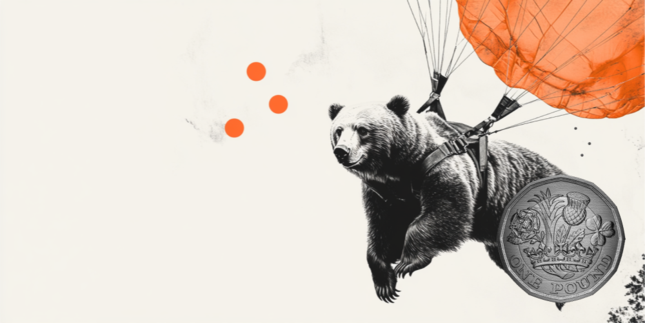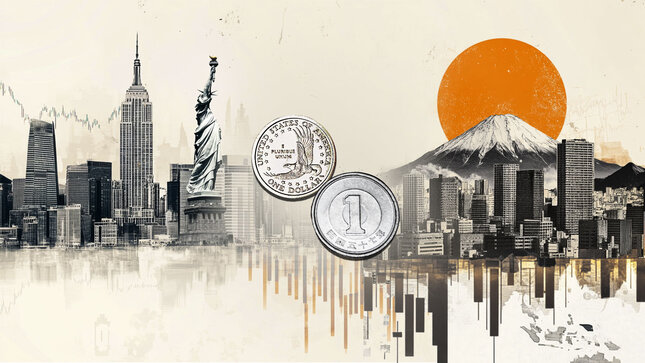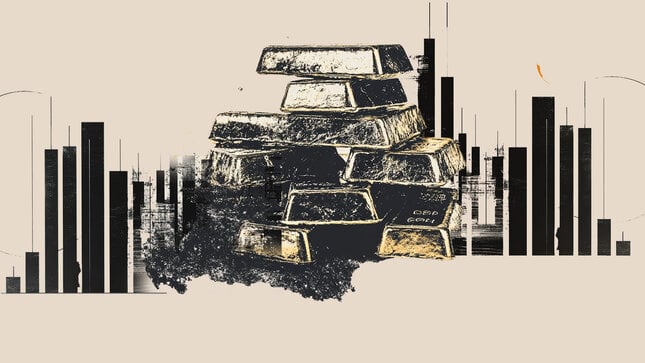THE COMMODITIES MARKET
Technical Overview
Commodities Explained
Commodities are raw materials or basic products used to produce other goods or deliver services. They often take center stage during inflationary periods, serving as a hedge against inflation. Gold,
in particular, has an important psychological value as a hedge against economic uncertainty.
But other commodities can also signal shifts in economic cycles. A bottom and rise in copper prices – widely regarded as a barometer of economic
health – may signal bearish conditions for bonds and utilities, which are sensitive to interest rate changes.
Energy prices impact the whole economy, besides having a psychological effect on inflation. Rising Oil prices, for instance, act as a “tax” on the economy as it tends to slow growth prospects. This often turns into lower interest
rates and higher bond prices.
COMMODITIES AND THE US DOLLAR
Commodities, priced in US dollars, tend to have an inverse relationship with the USD. A strong USD often puts downward pressure on commodity prices, making them less attractive to investors.
Commodity groups
Similar to industry sectors in equity markets, the commodity market consists of several groups, each providing different economic signals.
Precious metals: Gold, Silver, Platinum, and Palladium. Copper, despite being used primarily for industrial purposes, is usually also lumped into this category. Precious metals are very popular among Forex traders due to their perceived monetary value.
Energy: Oil is the most prone to supply shocks, political tensions in Oil-producing countries or regions, policies from the Organization of the Petroleum Exporting Countries (OPEC), and volatile demand from emerging countries. These factors create significant risks for those t rad ing in this market. Higher Oil prices tend to negatively impact equities, raising the prospects of higher inflation and slower growth.
Grains: Grain prices fluctuate on the so-called crop year, with planting and harvesting forming tradable price cycles. However, those cycles are influenced by unpredictable weather conditions. Key agricultural commodities include Corn, Soybeans, Wheat and Oats.
Soft commodities: This category includes coffee, orange juice, cocoa, sugar and cotton.
Some commodities, specifically the metals group, are considered tangible assets because they are non-perishable. Meanwhile, Silver and Gold have the advantage of consistent specifications across nations, unlike Texas and Brent crude Oil, which differ in composition.
GOLD SPOT - DAILY CHART
US DOLLAR INDEX - DAILY CHART
PALLADIUM - CHART
WTI OIL- DAILY CHART
Commodity Currencies
Commodity currencies are said to be correlated with the price of commodities. The Australian dollar, the Canadian dollar and the New Zealand dollar are considered commodity currencies because the economies backed by the named currencies are sensitive to commodity valuations. In this light, be sure to factor in the global economic outlook when evaluating any of the commodity currencies. In any case, correlation is not causation and such relationships can and do break down.
AUD/USD SPOT - 60 MIN
AUD
Being China a tremendous consumer of raw materials, and Australia a leading exporter of metals, coal and grains, market perceptions of strong demand from China could see the Australian dollar gain in sympathy with commodity prices. The boom in Asian regional growth over the past decade has supported the Australian economy, bringing with it higher levels of inflation. This explains why the RBA maintained higher interest rates than other major central banks.
Visit a dedicated AUD/USD page.
CAD/USD SPOT (RECIPROCAL)- 60 MIN
CAD
Canada is the fifth largest gold producer and fourteenth largest oil producer. Thereby, strong commodity prices generally benefit domestic producers and increase their income from exports. There is a caveat, though, and that is the positive correlation makes the Canadian dollar more expensive in USD terms. Since Canada's economy is very dependent on external demand from the United States, a strong CAD could filter into reduced demand for Canadian Exports.
Visit a dedicated USD/CAD page.
NZD/USD SPOT - 60 MIN
NZD
New Zealand is primarily an agricultural-commodity-producing economy (dairy products and meat in particular), and therefore it displays a weaker correlation than CAD and AUD to metal and energy prices. But still, it is highly sensitive to global performance, especially of its key trading partners, Australia, United States and Japan. It's commodity currency status is also to be understood via its dependency on the Australian economy, and since Australia is very commodity driven, any changes affecting the Australian economy affect New Zealand as well. Against the Japanese yen, the NZD can bee regarded as a risk barometer.
HOW BULLISH ARE COMMODITY CURRENCIES AND THE USD AGAINST A BASQUET OF 21 WORLD CURRENCIES?
The Bullish Percentage Index compares the four majors against the 21 most traded currencies (accordingly to the BIS stadistics). Among these currencies there is the Korean Won, the Mexican Peso, the Turkish Lira, the Brazilian Real, etc. It shows the percentage of currency crosses on buy signals on Point and Figure charts. Point and Figure charts have the particularity to be objectively bullish or bearish, depending by the most recent double-top/bottom buy or sell signal. The Bullish Percentage Index is a breadth indicator used in stock indices, and its logic has been adopted by FXStreet.com to measure currency strength.
The index can be read as an oscillator, with readings between 0% and 100%. It is updated on a daily basis, on GMT close, and compared to the same data 5 days ago.
Latest Commodities Analysis
Editors' picks

EUR/USD trims losses, back above 1.1650
EUR/USD remains slightly on the back foot on Friday, trading around 1.1650 amid some modest recovery in the US Dollar. Investors, in the meantime, are expected to shift their attention to next week's US inflation data release. Fed officials' comments and trade news also remain in focus.

GBP/USD turns positive near 1.3450
GBP/USD now flirts with the 1.3450 zone, managing to bounce off daily lows as the Greenback’s advance loses some traction. The British Pound remains bolstered by the BoE's hawkish cut at its meeting on Thursday. Cable remains en route to close the week with marked gains.

USD/JPY rises beyond 147.50 amid a broadly firmer US Dollar
The US Dollar is reverting to the previous two days' losses as investors welcomed reports suggesting that Fed Governor Waller is emerging as a top candidate for the replacement of Chair Powell in May, while a moderate risk appetite is weighing on the safe-haven Yen. Waller is a dove and was appointed by Trump during his first term.

Gold keeps the rangebound mood near $3,400
Gold seems to have entered a consolidation phase around $3,400 per troy ounce, giving up some gains after previous highs over $3,410. The announcement that the United States would tax one-kilo and 100-ounce gold bars is also supportive of the precious metal.

WTI tumbles to below $63.00 as tariff concerns mount
West Texas Intermediate (WTI), the US crude oil benchmark, is trading around $62.90 during the early European trading hours on Friday. The WTI trades in negative territory for the seventh consecutive day and heads for the biggest weekly loss since June.